Whilst it is difficult to pinpoint exactly when high-profile fashion muses became widespread, the concept has been around for centuries. In Greek mythology, the Muses are goddesses of the arts who ruled over ‘the Inspiration’ and are famously beautiful and alluring. The myth suggests that poets and other artists would attempt to summon the Muses in the hope that they would provide them with inspiration for their work.
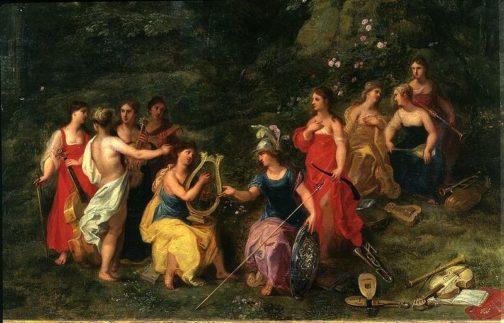
In fashion, one of the most famous muse and designer pairings was that of Audrey Hepburn and Givenchy, which was immortalised by the Breakfast at Tiffany’s LBD. For a designer, a muse is someone who inspires creativity within the designer, and embodies what the brand is about and the type of consumer they are hoping to attract.
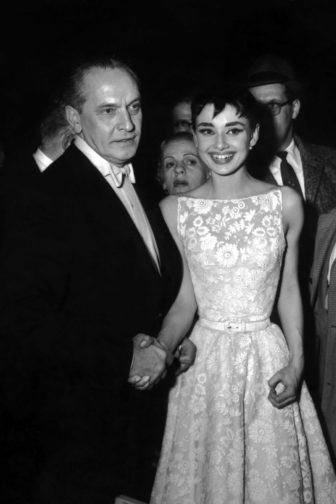
YSL’s most iconic muses:
Betty Catroux
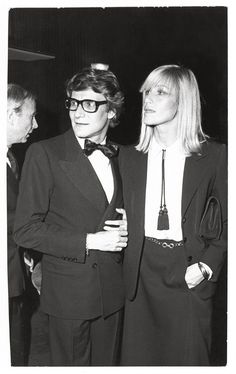
Betty Catroux and Yves Saint Laurent met at a Parisian nightclub in 1967 and their close professional and personal relationship remained consistent for over 50 years until Saint Laurent’s death in 2008. This relationship is recognised as so influential to YSL’s creative process that the Musée Yves Saint Laurent Paris held an exhibition surrounding Betty Catroux’s status as Saint Laurent’s ‘female double’. It was through Catroux’s androgynous look and the mixing of masculine and feminine elements, that YSL defined ‘the unusual codes of femininity and seductiveness’ that remain central to the brand and can be clearly seen in the exquisite tailoring that the brand is known for. The essence of what it means to be a muse is perfectly captured by current director Anthony Vaccarello, who states, ‘She lives and breathes Saint Laurent. An allure, a mystery, an almost nefarious aspect, an elusive yet desirable nature, all that underlies the house’s aura, and you understand the magnitude of it when you meet Betty.’
Paloma Picasso
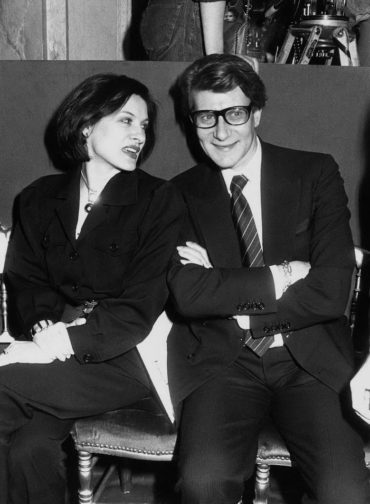
Paloma Picasso has remained a muse for the YSL brand from Yves Saint Laurent himself to current director Anthony Vaccarello. Vaccarello claims that ‘Paloma Picasso was the only woman who inspired a collection for Yves Saint Laurent’. Before going on to state, ‘Paloma was the only one who really changed Yves Saint Laurent’s perception of fashion… Before, he was really into couture – really into this cute, very perfect silhouette – and when he met her, with her huge red lips, dressed in vintage, she was really new for him. It changed his own style.’ It was this unique vintage style that Paloma wore in the early 70s that inspired the 1971 Scandal collection. By mixing past and present fashions, and masculine and feminine styles, YSL made fashion into a spectacle.
This iconic 1971 Scandal collection was referenced in the brand’s SS22 collection in which Vaccarello stated he wanted to recreate that exciting, fresh feeling associated with the original collection and Paloma herself, in his collection which marked the, hoped or perceived, end of the pandemic.
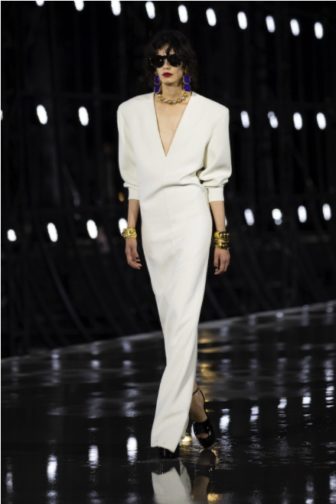
Mounia
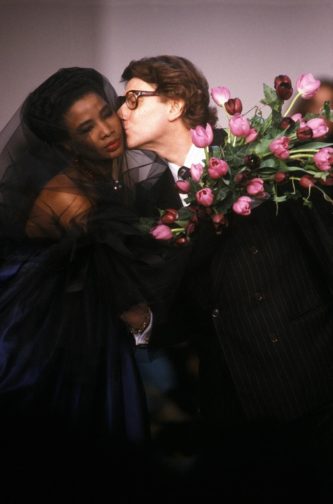
Mounia made history as the first black model to walk a Haute Couture catwalk in 1978. However, before this, Yves Saint Laurent was drawn to Mounia’s ‘rich complexion and unparalleled grace’ and throughout their collaboration, he drew upon her for friendship, inspiration and creativity. Saint Laurent was committed to showcasing the diversity within his models, and through his continued support, the fashion world as a whole fell in love with Mounia’s elegance. Throughout her career, Mounia wore YSL on the cover of many major magazines and consistently appeared in his collections throughout the 70s and 80s.
Rosé
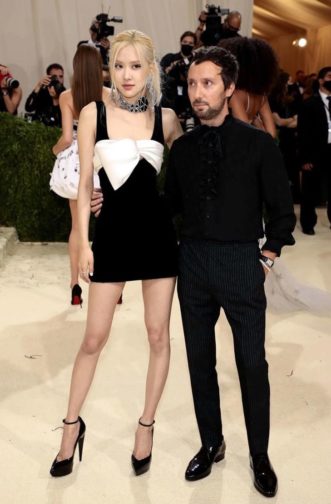
Blackpink’s Rosé was announced as global brand ambassador for Saint Laurent in 2020, and since then she’s become close friends with Anthony Vaccarello. Vaccarello said of Rosé, ‘She is Saint Laurent in the way she lives, in the way she takes charge of how she dresses, in her way of liberating herself from the crowd… She is someone who represents today’s society.’ In response, Rosé said, ‘I hope I am a muse to him and that he does get a lot of ideas from me…I have very strong opinions, and I think Anthony noticed that.’ So far the duo have most notably appeared side-by-side at the 2021 Met Gala, with Rosé wearing a ready-to-wear black mini dress with an oversized white bow.
It will be interesting to see where this partnership goes next!
By Rosie Dyer
Sources:
https://www.teenvogue.com/story/blackpink-rose-met-gala-2021
https://www.wmagazine.com/fashion/rose-blackpink-interview-saint-laurent
https://www.teenvogue.com/story/blackpink-rose-saint-laurent-paris-fashion-week
https://www.lofficielusa.com/fashion/who-is-mounia-model-yves-saint-laurent-haute-couture
https://museeyslparis.com/en/exhibitions/betty-catroux-yves-saint-laurent
https://fashionista.com/2019/07/fashion-designers-muses-inspiration
https://www.greekmythology.com/Other_Gods/The_Muses/the_muses.html














